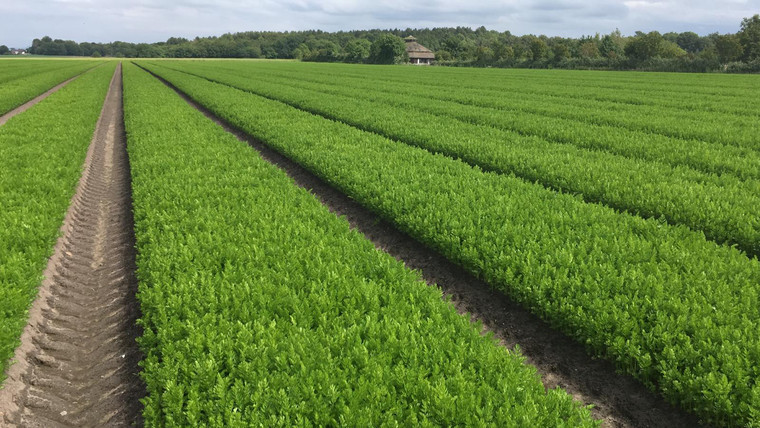Carrot growers must stay on top of foliar diseases right up until the point of harvest, with fungicides that boast a short harvest interval useful in ensuring crop yield and quality aren’t jeopardised in the final weeks of the season. That is according to ProCam agronomist, John Cairns, who also recommends the use of fungicides with multiple actives and modes of action.
“With weather patterns becoming increasingly variable and difficult to predict, carrot growers must ensure their crops remain protected against foliar diseases such as alternaria, sclerotinia and powdery mildew until as close to harvest as possible in order to protect the crop’s quality and, for early top-lifted crops, to promote healthy foliage to aid efficient harvesting,” Mr Cairns explains.
“All three of these diseases have the potential to reduce yield and affect quality in the final few weeks prior to harvest: alternaria, for example, will spread rapidly across a field if warm, wet conditions prevail, while powdery mildew will be the dominant threat in dry conditions. Meanwhile, sclerotinia tends to occur when carrots have filled up and start to drop their leaves onto damp soils.”
In addition to using integrated crop protection measures – maintaining good field hygiene, planting disease tolerant varieties and using a long rotation to prevent diseases spreading from one crop to the next – growers should also use suitable fungicide treatments to prevent diseases taking hold, including during the final weeks of growth.
“With a good armoury of fungicides available for carrots it’s not too difficult to find products to target most key diseases, with the period prior to the canopy covering over key to successful control,” Mr Cairns continues. “Unfortunately, things can get a little trickier as the harvest season approaches, not least because a lot of fungicides have a pre-harvest interval of up to three weeks which means crops can be left susceptible to new infections nearer to harvest.”
Even at this late stage in proceedings new infections can still have a significant impact on crop yield and quality so it is vital to remain vigilant right until the last moments of the crop’s development. “Fortunately, Perseus, a protectant fungicide which offers good control of key carrot diseases including powdery mildew, alternaria spp. and sclerotinia can be applied as late as seven days prior to harvest,” Mr Cairns adds.
Mr Cairns also recommends using multiple modes of action to help with anti-resistance strategies: “Two actives invariably offer better protection than one, with products such as Perseus which contains two active ingredients (75g/l fluxapyroxad and 50 g/l difenoconazole) and two modes of action (an SDHI and an azole) offering the ultimate in protection and resistance management. Fungicides with a seven-day harvest interval also give growers greater flexibility in choosing which fields to lift first should a spell of wet weather threaten to hinder progress.”
Mr Cairns also highlights the importance of crop nutrition to maintain yield and quality: “The application of an appropriate programme of foliar nutrients is at least as important as choosing the right crop protection products when it comes to maintaining a healthy and profitable crop,” he explains. “At the two-leaf stage crops should receive manganese and magnesium. An NPK foliar feed plus trace elements including seaweed extract is very useful to counter any ensuing drought stress. Subsequent nutrients should be applied throughout the main part of the season, with calcium and boron added to the mix once carrots have reached the seven-leaf stage and beyond.”




